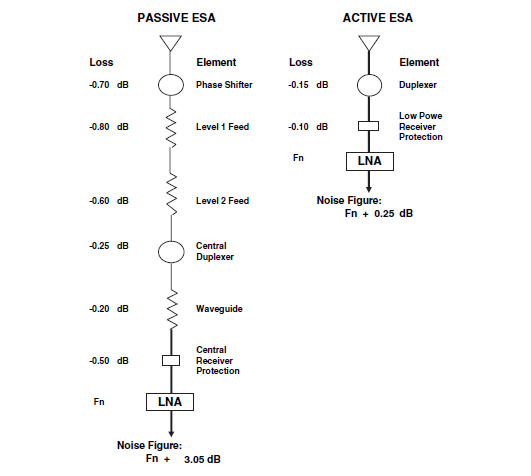Air force : While Moroccan air force is relatively smaller, but the F-16s Morocco has just blows the competition, it has a better engine (F100-PW-229) , better avionics (AN/APG-68v(9) + APG-83 AESA radar) and a more advanced and diverse armament.
#ENGINE
The engine on the Moroccan Vipers is the powerful and tested Pratt F100-PW-229 with 130kN thrust and most importanly a far longer mean time between overhaul (MTBO) than the Su and MiG Lyulka AL-31 and Klimov RD-33 series.
Engine life comparison
- Pratt F100 PW-229 EEP : 8000 hours
- Lyulka Al-31F : 900-1500 hours
- RD-33 : 700 hours
That means the F-16s will spend most of their active service flying instead of doing repairs and overhauls.
Indonesian air force both operate the F-16 A/B and C/D all of which uses the older Prat F-100-PW-220E and the SU-27/30 with Lyulka Al-31F. Overall our air force prefer the F-16 and the F-16s remains Indonesian air force backbone. The Sukhois are known hangar que**.
Note: there are some difference on the engine life hours, but overall Russian engines are more prone to overhauls. As note the AL-31F could be overhauled twice and then it must be dumped.
#ARMAMENTS
A2A
This is where the F-16 particularly shines, starting from the AAM. The F-16 has a lavish choice firing multiple NATO standard air to air munitions, but to keep it real we’re talking the two standard Fox 2 and Fox 3 missile in Moroccan inventory the AIM-9 and AIM-120
The latest iteration for the Sidewinders is the dash 9X blk II, which offers significant improvement in target discrimination than the dash 9X block I and improved off boresight capability. The Algerian principal short range AAM is the R-73 which also offers the same off boresight capability , but its questionable if its match or exceed the 9X, because unlike the
Archer, the Sidewinder has incremental improvement program from time to time.
The same could be said with the Fox 3s, the principal long range AAM of the Moroccans is the AMRAAM while the Algerians, the
Adder AA-12. While both are classified as medium to long range missile, just like the AIM-9X, the AIM-120D benefitted from Pentagon incremental upgrade of the missile, there has been 4 block iteration of the AIM-120 since its introduction in the 90s , while the AA-12 has only one.
The AIM-120D are reportedly able to achieve the longest air to air kills ever recorded on an air breathing target last year.
Other than that, Moroccan F1s also employed the MICA which is a very agile air to air missile
A2G
The war in Ukraine shows us that Russian air force platforms has not invested significantly on targeting pods to employ laser guided smart bombs and continue to rely on old iron bombs and missiles (which are very expensive).
The F-16s (especially that employed by Morocco) are able to lob precision bombs usually in the forms of either the GPS/INS guided JDAM, laser guided Paveways or the GPS+Laser LJDAM/ French AASM all of which are deployed on the Moroccan F-16s and Mirage F1s.
All those smart bombs could hit their target precisely because the Royal Marocco Air Force (RMAF) had invested significantly in the use of targeting pods.
Some of the advanced pods employed by RMAF :
- Goodrich DB-110
- Litening
- Damocles
- Sniper
Algerian air force do have their own smart bombs, but most of it are heavy and big, KAB-1500L for example, and because Russian smart bomb kits aren’t produced nearly as much as their US counterparts, its must be very expensive due to lack of economy of scale, hence bought in limited number. Also being Russian platform, it doesn’t really have anything close to the targeting pods deployed by Western jets. I am aware of the T220/E targeting pod , but its performance questionable, and if I’m not mistaken Russian air force themselves had not used any of those.
Both RMAF and AAF deployed anti radiation missile (AGM-88b and KH-31PD)
Both RMAF and AAF deployed shor range A2G missile (AGM-65 and Kh-29), but the AGM-65 is a lot smaller in size for the same role and performance. More missile could be carried.
AAF Su and MiG’s are equipped with the KH-59MK ALCM, while the RMAF will soon uses the Delilah, both are combat proven in both Syria (IAF) and Ukraine (used by RuAF). But AAF leads this time.
RMAF F-16 will soon be equipped with the RGM-84L Block II Harpoon AShM, replacing or augmenting existing AM-39 launched from the Mirage F1s.
#Avionics.
Let me explain, the mechanically scanned and electronically scanned radar has nothing to do with efficiency. Its more to do wth radar beam steering.
A mechanically scanned radar could be superior than a PESA radar if the software and T/R module is better. Being mechanical has nothing to do with target discrimination, an electronically scanned radar steers the radar beam electronically to all side while mechanical steered ones used (as the name suggest) mechanical arms to swing the plate around. But yes, PESA could scan the skies faster than mechanically scanned ones.
AESA radar can achieve better signal to noise ratio compared to PESA (better signal to noise ratio will improve radar detection range). AESA design is approximately 2.79 dB better than PESA design in that aspect ( or about 47% better )
Furthermore , since individuals T/R modules on AESA do not rely on a single high power amplifier, they can transmit signal at different frequencies at the same time. As a result, an AESA can form several independent beams at different frequencies simultaneously by dividing the array into a few smaller sub-array, that improves its multitasking capabilities.
Can someone explain the difference between the two to me? Sepcificly how conops or doctrine of use changes depending what's being used.

www.key.aero
AESA is also very resilient to jam and could actually used in jamming role as demonstrated by the APG-83 on the Lightning.
Russia does not produce AESA (safe for maybe the Su-57s) and its performance is questionable.
The SABR APG-83 installed on the Vipers are 3rd gen AESA radars, not all AESA are equal, and because this is US made, its more mature. It is reportedly developed with lessons from the APG-81 Radar (the most advanced radar on any flying jets)
The F-16s are equipped with the LINK 16 data links, I don’t have to explain why data links are important and overall Moroccan orders for its electronics package are more extensive as you can read in this link below

www.dsca.mil
The biggest L for the RMAF is their F-16s are not supported by the necessary air refueling tanker to do air to air refueling. (and so do us, Indonesians lololol), but good for them , RMAF had those CFT as standard and a more fuel efficient F100 PW-229 engine
#Pilot kit.
Moroccan Pilot are equipped with the latest JHMCS II helmet mounted cueing system which not only looks better, it is a step ahead than the Sura HMCS used by Su and MiG pilots
#crew
At best this is questionable, but RMAF pilots do train with the best (USAF). Air forces train with their weapons supplier and the Russian air force performance are laid bare for everyone to see. But until an actual Morocco v Algeria war happens this is at best guessing.
Next : NAVY
Navies firepower in WW1 and WW2 are measured in their throw weight, while modern navy firepower are measured by the battle force missile (BFM).
BFMs are missiles that “contribute to battle force missions such as area and local air defense, anti-surface warfare, and anti-submarine warfare. Terminal defense SAMs, which protect only the host ship, are not considered a battle force missile.” Thus, weapons like RAM, ESSM, SA-N-9, Mistral, and HHQ-10 point defense SAMs would not count toward the tally of BFM. (
source)
Looking at the BFM , Algeria won in every measures.
- 2x Meko A200 = 32x RBS-15MK3
- 3x Adhafer =24x C-802
- 1x Kalaat Bani Abbes = 8 Aster 30 Area defense missile
- 4 x Kilo 636 = 16 Kalibr SLCM
Total BFM = 80
Morroccan Navy :
- 2x Floreal FFL = 4 Exocet MM.38
- 1x FREMM = 8 Exocet MM40
- 1x Sigma 10513 = 8 Exocet MM40
- 2x Sigma 9813 = 8 Exocet MM40
Total BFM =28










